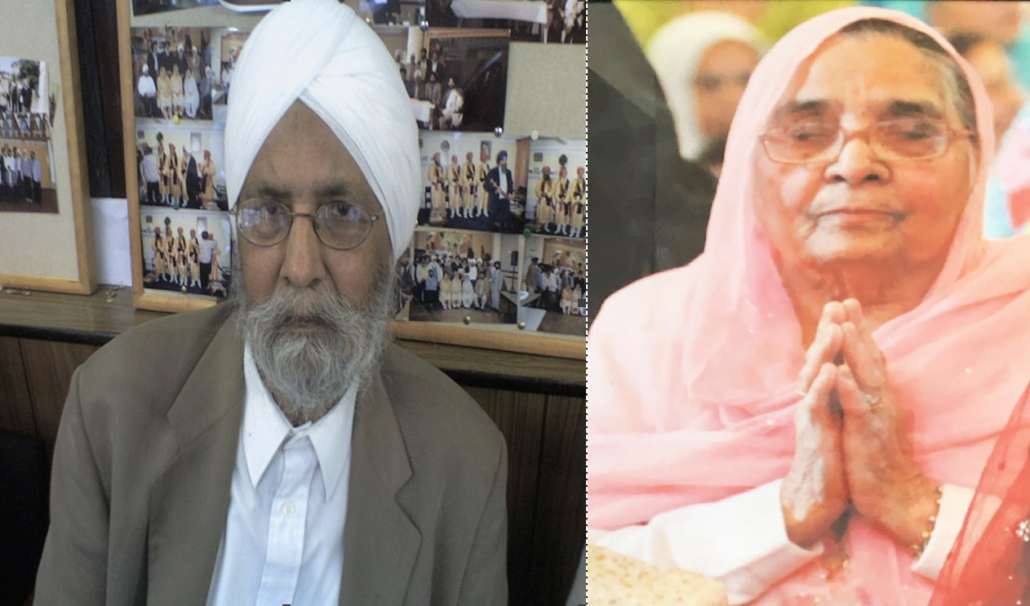Biography
| Name | Bhagat Singh Chana |
| DOB | 3rd August 1914 | Wife 1st May 1921 |
| Decease Date | 18th February 2005 | Wife 2nd June 2008 |
| Place of Birth | Punjab , India |
| Date Married | Approx: 1949 |
Read Full Bio of Late Bhagat Singh Chana
Sardara Singh Chana son of Bhagwan Singh Chana was born in 1914, in a small village called Newan Qilla, Punjab, India, and married to Karam Kaur Chana, maiden name Nandra. Sardara Singh was one 11 children and lived to the age of 66. Sardara Singh had 7 children, 4 sons and 3 daughters in the following order:
1. Jagir Kaur (Matharu)
2. Malkit Kaur ( Matharu) nickname Seelo
3. Tarlochan Singh Chana
4. Hari Singh Chana
5. Harjinder Singh Chana
6. Gurmakh Singh Chana
7. Parmjit Kaur (Ghataora) born in UK
Sardara Singh in India
By trade, Sardara Singh was a bricklayer & masonry craftsman of exceptional talent but very modest. As a young boy he was fascinated by design, and had an awareness of style and methods of construction (of buildings). In his early years, his passion led him to work on various building projects in Bangalore, Ambala and in the Punjab. In 1958 at the age of 44 his passion led him to England for a better life for his family.
Sardara Singh in England
Life in England was difficult when he arrived. Winters were harsh for a bricklayer as there was no money growing on trees despite the promise of many in India. Getting a job was even harder for a turban wearing Sikh who could barely speak English. But he was a pioneer who did not accept defeat. After many jobless months, he approached yet another building site foreman, for a job as a bricklayer. The foreman, Penny Jenkinson, told him to go and sell ties & clothes door to door, as bricklaying was a craftsman’s job that required skill. Angry and frustrated by so many rejections day after day, Sardara Singh asked his interpreter, Avtar Singh Chana, if he could demonstrate his bricklaying skill to Penny. After some discussion, Sardara Singh Chana was given an opportunity to show what he was capable of.
Penny was so impressed by his work that he took him on Immediately. Sardara Singh had finally got a job that earned him money to survive in the UK.
Over the years the friendship between Sarada Singh and Penny became strong and they became good friends.
As a turban wearing Sikh with a secure job Sardara Singh became a legend in the South East of England. He was the “Go To Person” for other Sikhs if they needed a job. He was also renowned for helping new arrivals with lodging, job training and food until they became self sufficient. The people he helped ranged from close family members to friends or anyone else.
He worked hard and purchased his first house at 141 Alabama Street, Plumstead, SE18. Then, in November 1962, his wife Karam Kaur and their six children joined him from India. He also brought over his elder brother Bhagat Singh and younger brother Piara Singh.
Being a modest person, Sardara Singh’s work ethic was beyond reproach. Even though he couldn’t write, he was promoted to foreman at Kirk & Kirk. In his new role he didn’t know how to fill out the paperwork. To overcome this issue, he cleverly took it home each night and asked his eldest son Tarlochan Singh to fill out the timesheets and other paperwork.
He was also well known for not missing a day’s work through illness. He always showed up regardless of circumstances
When Sardara Singh and his two brothers worked as bricklayers in London their best place for refreshments in the evenings after a hard day’s work was at a bar called Percy’s on Sandy Hill Road, Woolwich.
Sardara Singh Chana’s contribution to the building of the Gurdwara Shahid Asthan, in Nawan Qilla, Punjab India was important to ensure future generations had an understanding of their ancestors or/and origins.
He was respected highly in the community and worked hard with others on the first Ramgharia Gurdwara in Woolwich as well.
Sardara Singh, like his two other brothers who joined him, wanted the children to have a better life than themselves. As a result of his determined effort to educate his children, his eldest son Tarlochan Singh became a successful building contractor, second eldest son Hari Singh became a doctor, middle son Harjinder Singh became an Electronic Engineer, youngest son Gurmakh Singh (AKA Karam Singh) also became a doctor and youngest daughter Parmjit Kaur worked in Banking and later in education. His two eldest daughters, Jagir Kaur & Malkit Kaur (AKA Seelo), were married shortly after they arrived from India.
Duty, decency, reliability, honour, dignity, respect and resilience: these are all qualities that Sardara Singh held in high esteem and practised every day during his time. In spite of having to deal with racism (in his time) he persevered for his family.
Karam Kaur and Children in India
When Sardara Singh left for England in 1958, back in the village, his wife Karam Kaur felt the heavy burden of responsibility caring for her six children. The youngest among them was only one-year-old (born Dec 1957). From that moment, she became a lioness protecting & caring for her cubs.
The most worrying time for her and perhaps most testing time may have been when her youngest son, Gurmakh Singh, fell from the 1st storey of their house and broke his right leg. Karam Kaur had to carry her son for miles to see the only doctor in the next village. His leg was put in splints and fortunately his leg healed without any permanent damage.
Partition In India
It’s worth pointing out that Karam Kaur went through a traumatic time in India during the partition in 1947. She talked about one particular incident she witnessed during that awful day of many killings; it was a 9-year-old Muslim girl pleading for her life. With her arms stretched out she said, “please take my bangles but don’t kill me.” Unfortunately, the little girl was not spared. Sikhs were also killed in similar circumstances/ways.
Karam Kaur and Children Settle in England
In 1962 Sardara Singh sent tickets for his family to travel by ship to England. With six children in tow, Karam Kaur boarded from the docks in Bombay (now called Mumbai). This was indeed a challenge but she was not fazed by the city, the crowds or officials. Once on board, the family was allocated eight bunks in the hull of the ship with other Indian families. Each family had their own little space. The voyage lasted fourteen days, there were days when the sea was choppy and everyone was seasick. Her youngest son, Gurmakh Singh, suffered from a fever and spent almost the entire journey in the sick bay.
Once in England Karam Kaur had the task of cooking Indian food. She bought rations from a local Indian immigrant who would come by once a week in a large van. Karam Kaur continued to support her husband and supplement their income by working from home gluing lace to the bottom edge of lampshades. Sometimes, the whole family chipped in to help. Her second eldest daughter, Malkit Kaur, helped the most. Her children said that the glue used to smell so much in the house that it’s a surprise they didn’t all become glue sniffers.
Later on, Karam Kaur worked at (Sarson’s) Pickling factory in North Woolwich for some years and at home again on dressmaking. Again, dressmaking was a family affair; Karam Kaur and Malkit Kaur sewing the dresses, everyone else helping where they could. When dresses were ready and packed in heavy bags, her middle son Harjinder Singh would travel with her from Woolwich train station to London Bridge and help deliver the completed dresses. Her eldest son did one better, to save money; he would load up the dresses on the back of his bicycle and cycle to London Bridge, a round trip of 22 miles or so.
Thanks
All of Sardara Singh’s children still live in the UK with the exception of the two doctors who emigrated to Canada in the mid 1980’s.
All his children say, “we remember father wanting us to do well in our studies, he gave up a lot for us. Education was always priority number one for him. If you wanted to get out of doing a chore you just said I have to study”.
Sardara Singh and Karam Kaur’s children owe their success to their parents’ hard work and courage as immigrants who persevered in the face of racism.
Their dream of a better life for their family became a reality. They leave a legacy of professional, educated children and grandchildren, who are the fruits of their hard work and dedication to their family and community.




